Moving finished vehicles in North America has been made difficult by a shortage of transport capacity, but speakers at this year’s Automotive Logistics and Supply Chain Global conference revealed the benefits ahead through investment in transport assets, a better multimodal strategy and stronger contracts between OEMs and logistics providers.
Speakers from Nissan, Glovis America, D-Troy and Michigan State University discussed the ongoing shortage of transport capacity impacting the delivery of finished vehicles during a panel at the Automotive Logistics and Supply Chain Global conference in Dearborn, Michigan. This issue, which originated in the wake of the Covid-19 pandemic, is gradually being alleviated by a combination of capacity investment and improved collaboration between partners supported by new technology. But the rise in electric vehicle (EV) sales has introduced fresh problems.
Transport capacity for vehicle shipments on ocean and land was cut when Covid shut assembly factories around the world, and vessel operators – road haulage and rail firms – cut their losses by laying up or selling off transport assets. The problem was exacerbated by staff layoffs and what became known as ‘the great resignation’ – an exodus of staff, including haulage drivers that were already in short enough supply, who either retired or moved to other parts of the logistics sector. When production resumed to meet surging demand, the industry lacked the capacity to handle it.
“After Covid, capacity just collapsed as everyone rushed to ship vehicles all at once; it was chaos,” said Charles Franklin, senior national manager of business development, Glovis America. However, Franklin said that capacity is cyclical and believes the situation is likely to cure itself.
Investment areas
There is plenty of evidence that maritime investment is happening to ease the capacity crunch. Glovis, for example, is investing big and Franklin pointed to the fact that the company has ordered 28 new vessels, 12 of which will be capable of carrying over 10,000 units, set to enter service in 2027. Glovis has already received two of the 7,500 capacity vessels. The company is also realigning its routing and working with multiple partners (including BYD, which is investing in its own ships) to maximise efficiency of the vessels.
“We’re trying to build triangular shipping patterns that give everybody full loads in each direction, which makes it more profitable and also makes it easier to support demand,” Franklin said.
Agustin Sustaina, chief commercial officer at D-Troy Logistics, a vehicle haulage firm within Grupo ATC, said the company is mitigating capacity shortages on the road with agile transport and storage services, including cross border to the US. Strategically placed vehicle compounds enable more flexible distribution planning without the costly pressure of working out of a port, according to Sustaina. That includes setting up vehicle hubs close to the border with the US to push more volumes directly to the dealership networks there.

At this year’s Finished Vehicle Logistics North America conference, Anu Goel, executive vice-president, group after sales and service at Volkswagen Group, discussed similar capacity constraints. Volkswagen, facing port congestion at Veracruz, responded by increasing its investment in yard capacity, opening a third seaport at Tuxpan to alleviate pressure.
Both Volkswagen and D-Troy, at their respective conferences, highlighted the importance of multimodal transport as well as investment into logistical hubs and agile solutions like rail and dedicated shipping routes to reduce bottlenecks and ensure smoother cross-border vehicle deliveries.
A multimodal shift
Rail is also playing a significantly larger role in North American cross-border vehicle shipments, which is also answering the capacity problem, said Val Kucherenko, former pricing and marketing manager for international and automotive at Canadian Pacific, but now, director railway education at the Centre for Railway Research and Education in Michigan State University’s Eli Broad College of Business.
“Historically, it’s been primarily trucking as the main way of moving goods between Mexico and the US but that is now actually changing pretty rapidly,” he said. “There was no single line service between the US, Mexico and Canada but that has changed over less than two years.”
Kucherenko pointed to the merger of Canadian Pacific and Kansas City Southern into CPKC in 2023, which he said changed the reality of the market. Canadian National and Grupo Mexico have also set up a competing venture to serve OEM customers.
“The automotive manufacturers and the spare part suppliers benefit from this by not only having extra capacity but also an alternative [transport mode] that is more efficient when it comes to moving goods,” he said.
However, rail is not immune to employment challenges. Efforts to recruit staff lost over the Covid period have arguably been hampered by the move to precision scheduled railroading (PSR), which aims to streamline operations and cut costs, including by employing fewer staff. Kucherenko pointed to recent Surface Transportation Board discussions around the loss of market share from rail to road.
“That was a really interesting discussion to follow,” said Kucherenko. “Essentially, railways are in the phase when a lot of them are experiencing PSR implementation. The PSR itself is not a fundamentally bad thing, but the way it’s being implemented is a different story.”
Todd Myers, director of finished vehicle logistics at Nissan North America, said that while there have been improvements in finished vehicle logistics across the board in the US over the last year, there continues to be rail capacity issues in Mexico. Myers said that getting rail supply into Mexico was a problem 12-15 months back but that had been resolved. The big problem now is with interoperability within Mexico and getting things done consistently.
“You also have a lot of import units coming in through ports from deep-sea causing congestion,” added Myers. “That congestion is inhibiting rail from getting in and it’s inhibiting your short-sea vehicles from getting exported.”
That situation is creating a capacity crunch for Nissan and Myers said the company is using all means necessary to move vehicles out of Mexico right now. “At the end of the day supply is better, but performance is still very inconsistent there,” he said.
Nissan is able to use all means necessary because there is greater opportunity for using multiple transport modes – cross-border haulaway, short-sea vessel shipments and even putting cars in containers.
“Every conduit right now is really a viable conduit for us to move vehicles, until they get the operational excellence back in place into Mexico, and that’s really what’s going to have to happen,” said Myers. “There are enough assets going in with the volume that we’re at today, it’s just the management of that operation [that needs improving].”
EV beasts
Looking ahead to the growth in EV shipments in North America, Myers said the next big impact is going to be on road-based haulaway, with each transporter unit losing anywhere between two to five vehicles because of the added weight of the EV battery and the trend to larger SUVs and pickups. Vehicle carrying trucks in the US have a loaded-weight limitation of 80,000 pounds (36 tonnes), something made further problematic once transport companies adopt electric trucks, which will be significantly heavier, again because of the battery.
Myers warned that the road-haulage sector will need to collaborate with vehicle manufacturers and share transport capacity, organising a system similar to the rail-car pooling management offered by TTX. He also said this would require getting around antitrust and privacy legislation, and the capacity shortfall is going to be exacerbated by a truck driver demographic that is not being renewed as older drivers retire.
“You’re automatically looking at a reduction in capacity of more than 50%, so it’s a big problem and it’s coming soon,” warned Myers. “As soon as the market starts pulling in the EVs at a greater rate [the problem] is really going to surface.”
Franklin described some upcoming EV models as “beasts” and echoed Myers’ concerns over transport capacity.
“There are some vehicles coming out in the near future that are 10,000 pounds each [4.53 tonnes],” said Franklin. “You’re going to suck up all of the capacity of a truck with just two or three vehicles in some instances, trucks that could have carried nine [sedans] back in the old days of [combustion-engine] vehicles.”
Franklin added, “That in turn will have a huge impact on the cost of shipment.” He said what is important for the future is to include vehicle engineering teams in pre-production discussions with logistics experts to ascertain whether the vehicle planned is able to be shipped efficiently. In relation to battery EVs, considerations also need to be made for the charge on international shipments, such as a programme that enables cars to go into ‘sleep mode’ on long journeys.
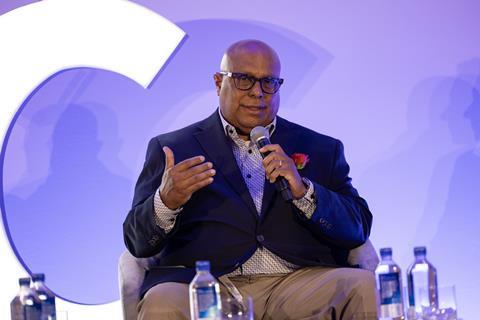
Sustaina of D-Troy highlighted the training required for drivers and operational teams handling EVs, noting that transporting battery-powered vehicles presents unique challenges compared to traditional internal combustion engine models. Sustaina also mentioned that D-Troy offers dedicated door-to-door vehicle transport between the US and Mexico to address cross-border transport needs.
Franklin pointed out that the technology in EVs is needed to support the streaming of vehicle data (or reflashing) that allows better traceability and identification at the ports.
“We have got to get more technology to allow the streaming of data to these vehicles,” said Franklin. “It doesn’t make sense to have 4,000-5,000 vehicles sitting at a port waiting for someone to physically inspect each one. Space at ports is expensive, and having your vehicles stuck there is costly.”
In terms of traceability and more accurate tracking, rail is beginning to benefit from a new service called RailPulse, which Kucherenko, said heralded a “revolution”.
The RailPulse technology platform provides real-time railcar data via GPS and other telemetry sensors installed on railcars that feed data to a platform on railcar location and condition to help shippers, lessors and railroads optimise fleet performance, visibility and safety to keep freight moving.
“In the rail industry, visibility has been a challenge but it’s actually changing,” said Kucherenko. “[RailPulse] is transforming the approach to visibility when it comes to railways and the commodities shipped inside the rail cars.”
This increasing visibility of railcars reflects a broader shift toward transparency across the finished vehicle logistics sector. Leaders at the Finished Vehicle Logistics North America conference echoed similar sentiments, highlighting how tools like supplier portals are being developed to share data in real-time with OEMs and transport partners. For example, Ford is working on a portal to give its logistics partners transparency into inventory, helping avoid bottlenecks and improve resource planning. As Paul Roosen of Ford noted, “The capability is out there, it’s just about how you democratise it in an efficient way.”
Communication and commitment
Alongside supporting technology, closer proactive collaboration with logistics partners and closer communication with the customer are important in overcoming present and future capacity issues in finished vehicle logistics. That communication with the OEM customer also needs to culture longer-term contracts.
That is something Glovis is pursuing in the interests of being able to invest in more capacity.
“One of the things that we’re doing both with our supplier partners and with our OEM partners is longer term agreements and relationships,” said Franklin. “We’re doing whiteboards and strategic plans because suppliers [can then] make the investments to support [OEMs] in the future.”
Long-term commitments to a service contract allow logistics providers to request financing for equipment with customer backup. That commitment also helped Honda, Franklin’s previous employer, address the problem of security and vandalism in Mexico.
“We have got to stop doing these one- and two-year partnerships because who can make an investment on this expensive equipment if they don’t know if it’s going to be there long enough to pay it off?” asked Franklin.
Myers agreed that better communication with its core strategic logistics partners was important and that had to acknowledge the different needs of those partners.
“It’s not a one size fits all for everybody, some companies will do well with a long-term contract, others are going to do well with volume guarantees, or something else,” he said. “There could be a wide range of strategies that work for the different partners, and it’s really up to us as an OEM to understand where their problems are.”
Myers said it was up to the OEM to support its logistics partners and avoid short-term cost decisions in favour of keeping those partners profitable because that is what ultimately builds a sustainable partnership.
“They’ve got a return of profit just like we do, and you can’t make short-term cost decisions, which happens often,” said Myers. “Over the long term you have really got to play more chess and less chequers, and think about how you keep those partners in good health and keep them viable. That way, when you need the capacity first, they are going to be there.”






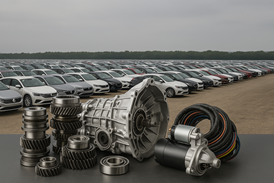



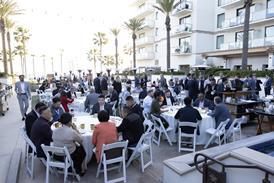















![Global[1]](https://d3n5uof8vony13.cloudfront.net/Pictures/web/a/d/s/global1_726550.svgz)

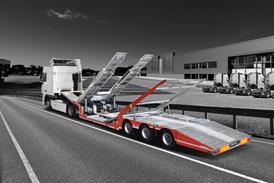







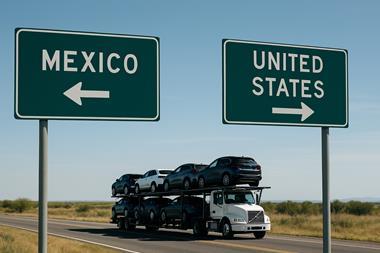



No comments yet